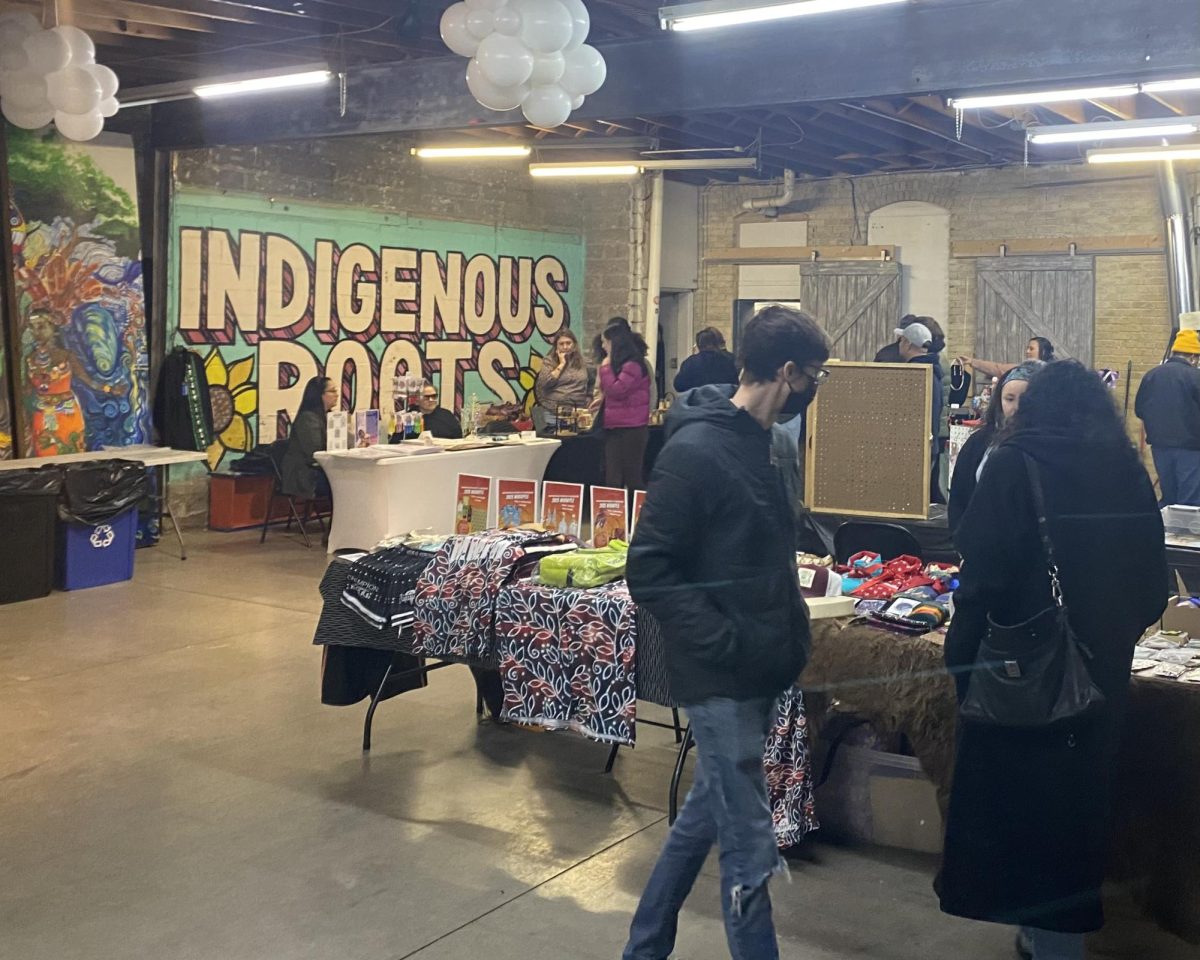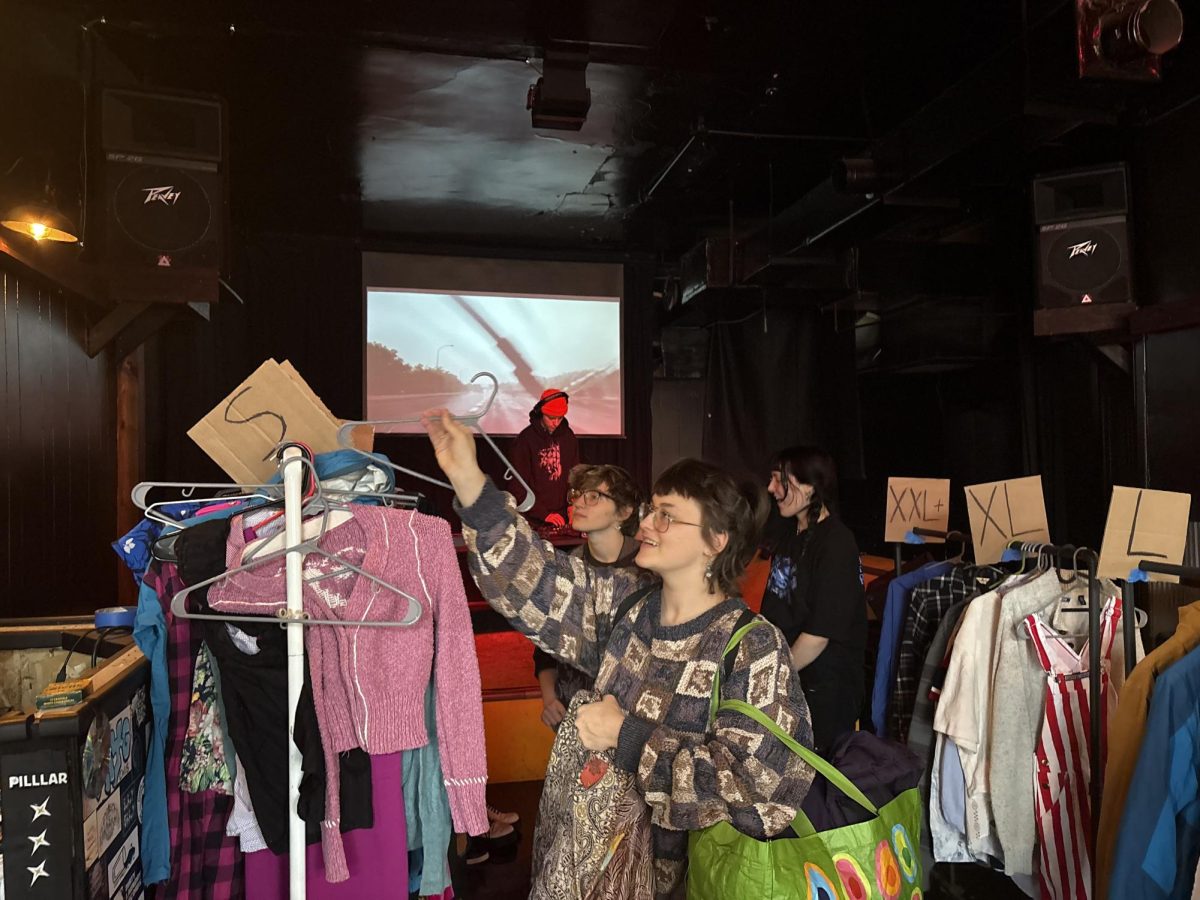Hipsters have a lot on their plate. Busy from all the news coverage and bike rides, yoga lessons and hair appointments, these urbanites need a lift. Red Bull cans never have been so stylish.
In fact, energy and health drinks, which have challenged traditional soft drinks, might have caused the sales volume of carbonated soft drinks to fall for the first time since 1985. Excluding energy drinks, sales fell 0.7 percent.
Where do these skinny-jean-clad caffeine fiends go on Friday and Saturday nights?
Lately, to the liquor store.
It seems that alcohol manufacturers have jumped on the “well-being” wagon, offering malt beverages with ginseng, guarana, taurine (Red Bull’s claim to fame) and copious amounts of caffeine.
When the Austrian beverage Red Bull first became popular in the United States in the 1990s, bartenders and drinkers had to think of new and inventive ways to bring the energy drink into the party scene. The results were the wildly popular Red Bull and vodka and “Jäger bomb,” Red Bull with Jägermeister.
The label on a can of Red Bull, however, clearly states that the drink is “not recommended Ö to be mixed with alcohol.”
Try telling that to the crowd.
Although Red Bull vodkas remain a staple at bars and frat houses, Rolling Stone magazine two years ago dubbed the drink “so Y2K.” According to these culture critics, “the wave of the future is Sparks.”
Sparks: the alcoholic pixie stick, a tanked Tinkerbell in a tallboy.
Produced by McKenzie River Partners of San Francisco, Sparks was one of the first premixed caffeinated alcohol drinks on the market. Sparks comes in 16-ounce cans with 6 percent or 7 percent alcohol, depending if it’s regular or Sparks Plus. Most beer products contain between 3 percent and 5 percent alcohol, depending on the state laws.
Sparks has literally sparked a revolution in liquor store coolers. Even companies like Coca-Cola and Pepsi, which produce the energy drinks Rockstar and Amp, respectively, are stepping up to the plate and coming out with 21-plus versions of their hugely successful beverages.
In the beginning, Sparks was marketed as an after-work drink for yuppies making the transition from work to play. Now it’s in the hands of the hipsters.
“We watch any emerging trends,” said Brendan O’Grady, spokesman for Anheuser-Busch. “The category of energy drinks started to become popular, so we decided to tap into that.” He insisted, though, that their versions of the alcohol-infused energy drink, B to the E and Tilt, are more along the lines of flavored alcoholic beverages, like hard lemonade and wine coolers.
“We really weren’t looking to get into the soft drink business as much as address a consumer demand for products,” O’Grady said.
And the demand is definitely there. University student Martin Dillman, who prefers Red Bull vodkas but not the price tag, said he drinks Sparks so he can stay awake longer when drinking.
“It definitely makes you rowdier,” Dillman said. “It doesn’t taste that good at all, but it has a lot of alcohol.”
Dillman, now 21, started drinking Sparks his first year of college. Since then, the fad has exploded.
Recently, the campus has been plastered with stickers from a new energy drink called “Four.” A person can hardly make a phone call at a pay phone without staring at the tallboys. The not-so-pleasant slogan reads simply, “Nice cans.”
Four takes it a step further than past energy drinks. This berry-flavored cocktail-in-a-can contains wormwood, one of the ingredients in absinthe.
It’s even possible that the sugary concoctions are taking over “40s,” the common name for a 40-ounce bottle of malt liquor. The energy drink “24/7” is 24 ounces of 7 percent alcohol, all for $1. Legal in only a few cities, such as Vancouver, British Columbia, and Milwaukee (it’s illegal in Minnesota), the drink is marketed to low-income drinkers.
Despite repeated warnings from health officials that mixing energy drinks and alcohol is dehydrating and dangerous, we keep drinking up.
“People drink different products for different reasons,” O’Grady said. “I don’t see anybody thinking that coffee, sodas or energy drinks are health benefit. In the old days, light beer was a quantum leap in the beer industry. Now different styles of beer and (flavored alcoholic beverages) are blurring the lines between types of alcohol. The consumers are getting much more diversified in their desires.”







